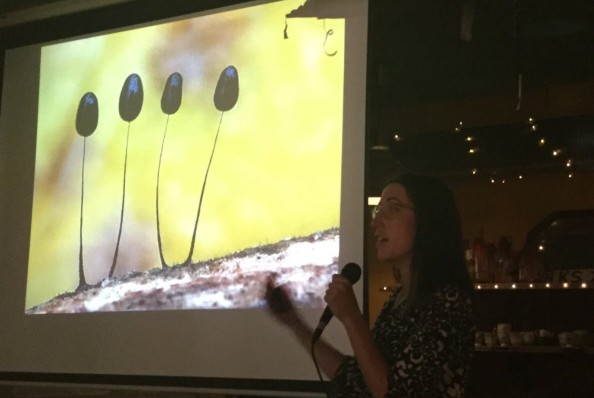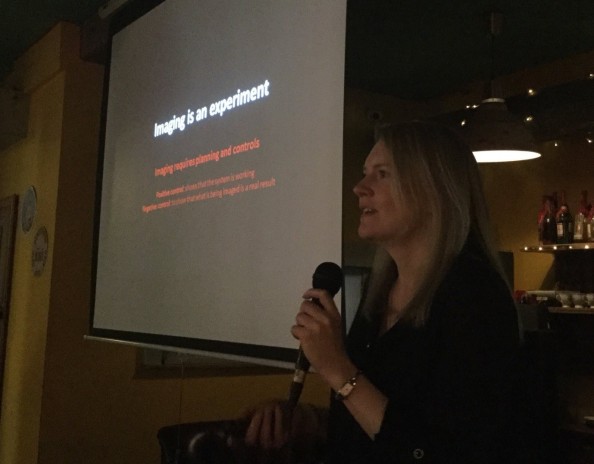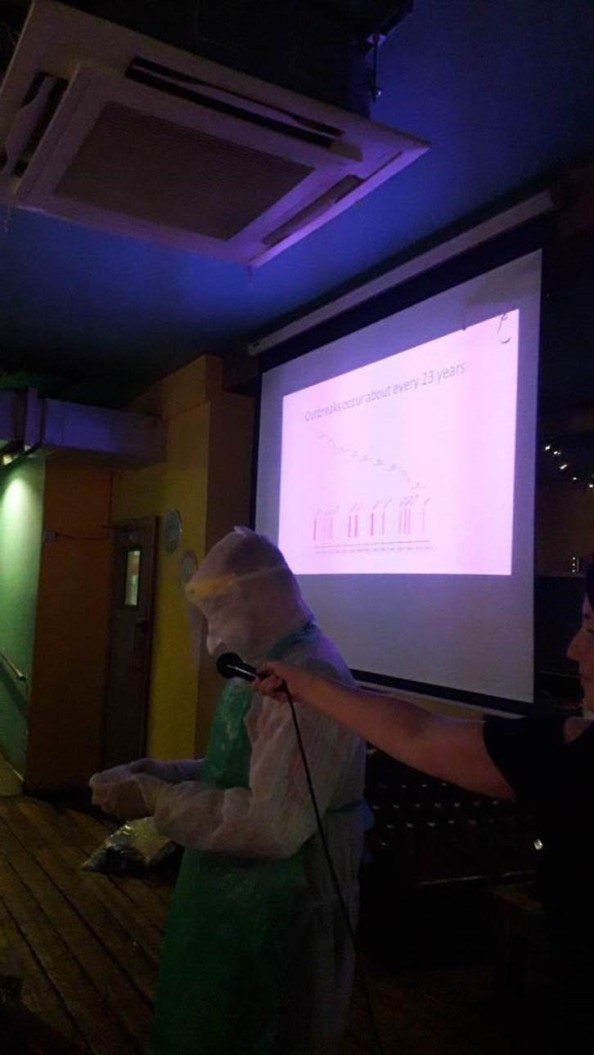Each year Liverpool hosts a one-night only art festival where local companies and organisations open their doors to the public. The evenings consist of performances, talks, workshops and more with this year’s theme: Ritual. STEAMLab – a collection of researchers and artists who are interested in sharing scientific knowledge through art – hosted the Antimicrobial Avengers.
In modern society, it has become almost a ritual to reach for the antibiotics as soon as you start to feel unwell. Antimicrobial avengers aimed to engage children and adults with the idea that antimicrobials are not a magical cure-all, before showing them how nature is inspiring research into alternative antimicrobials. For example, the structure of shark and gecko skin prevents bacteria from attaching to their surface, and Komodo dragons have antimicrobial proteins in their blood which make them resistant to many bacteria – important when you have enough bacteria in your mouth to cause sepsis with one bite! Antimicrobial surfaces are being used to develop sterile medical equipment such as catheters, and komodo blood proteins are being researched for possible applications.
Our event had 3 main stalls: a mini interactive exhibition of komodo, gecko and shark skin rendered in clay by Helen Birnbaum; a make-your-own bacteria stall; and a complete the comic strip stand, featuring ‘Shark Girl’ and ‘Komodo Dragon’ versus the evil ‘Superbugs’ in a series of comic strips (see here) designed by our Artist in Residence, Jess Irwin. Jen Adcott from the Centre for Cell Imaging provided videos of bacteria in action which were played throughout the evening.
Families began filtering in from 5pm onwards. Their knowledge ranged from the level of doctors and researcher to almost nothing at all. It was a fantastic evening of engaging children in science (or in one case designing a friendly bacteria called shiny who apparently lived in its creators eyeball) and talking to adults who had genuine interest in the subject.
It was a wonderfully successful event and fun for all involved. Talking with adults and children about a topic of such great importance is always rewarding, especially when they learn something new. Everyone had a great time and we can’t wait to do it all again!
Acknowledgements
Special thanks to Mark Roughly, Jess, Raechelle and Louise for making this event possible and to the rest of the team for all the extra help on the day
Funding from the Centre for the Humanities and Social Sciences of Health, Medicine and Technology (CHSSHMT)
From the University of Liverpool: Raechelle D’Sa (Lecturer)– Louise Reynolds (Postdoc)- Nicola White (Research technician)- Jen Adcott (Technician)– Helen Davison (PhD student), Jess Irwin (MA Art in Science, Artist in Residence)
From Liverpool Jon Moores University: Mark Roughly (programme leader of MA Art in Science)
Others: Helen Birnbaum















